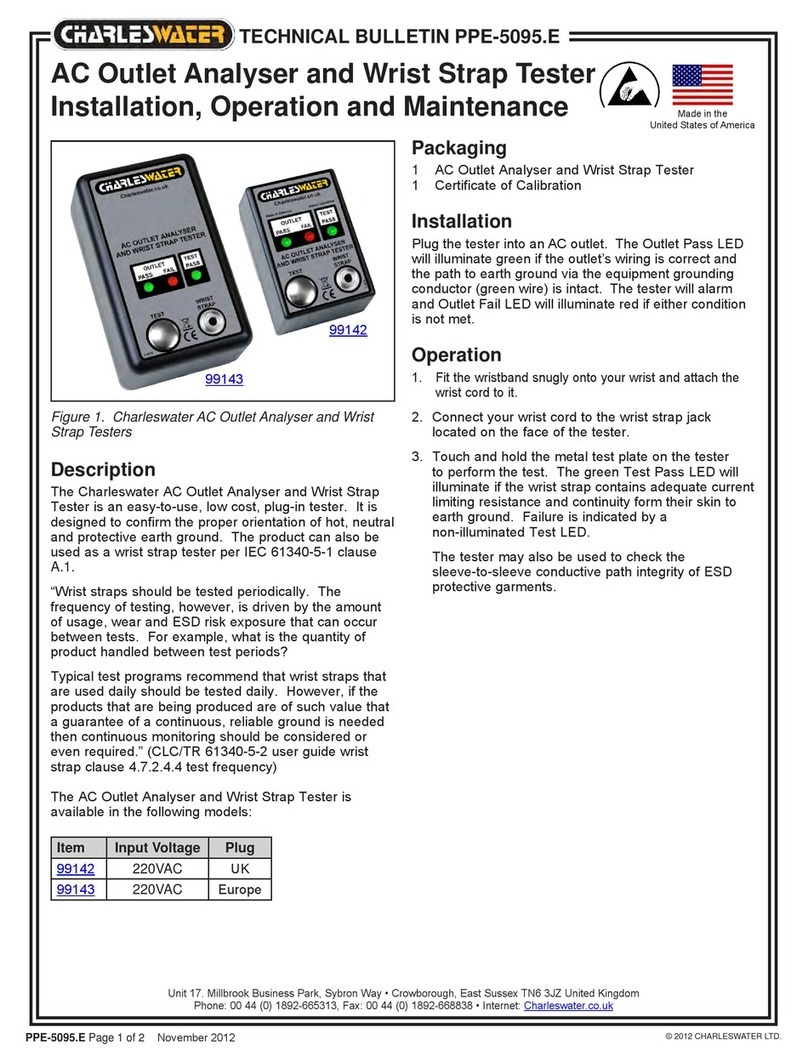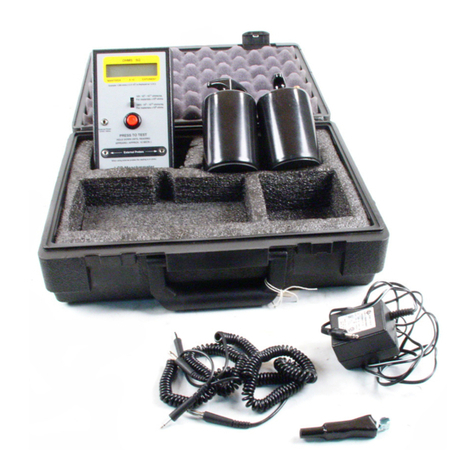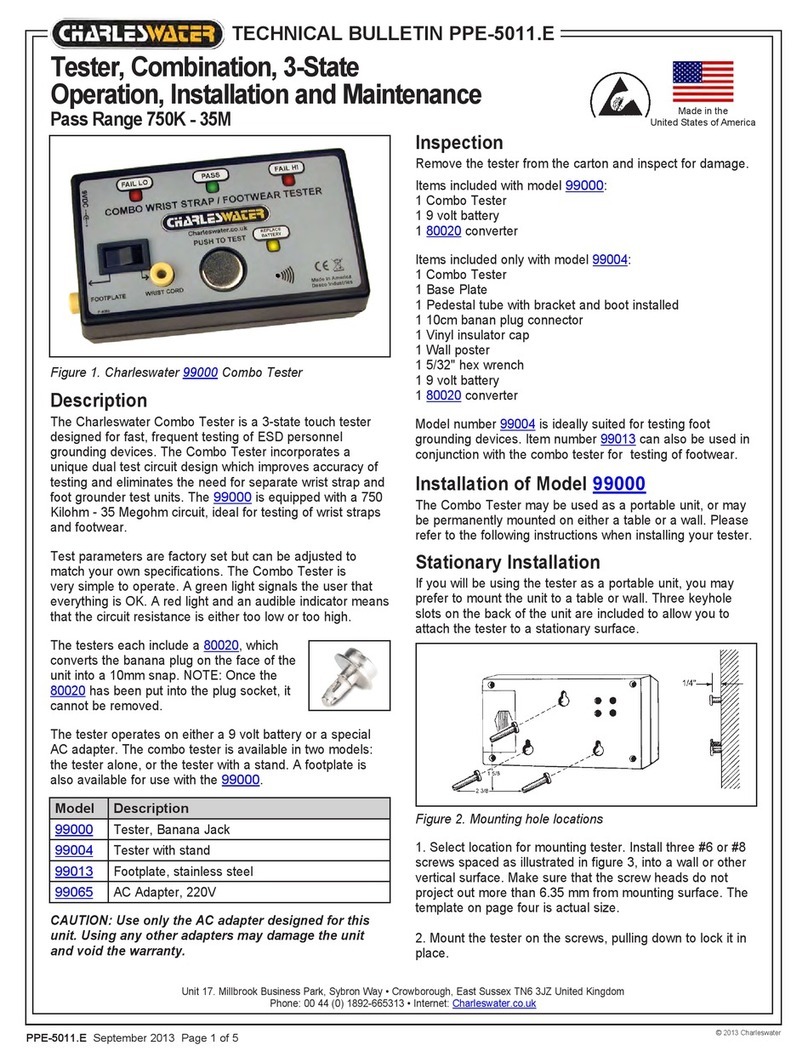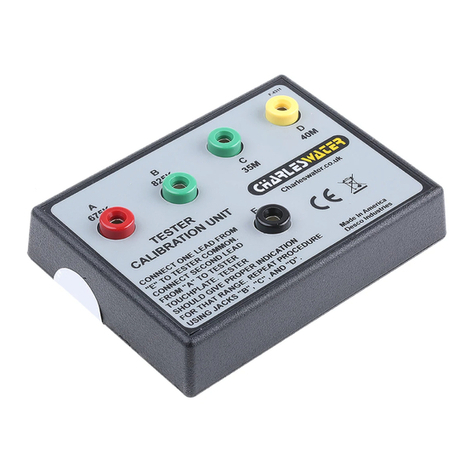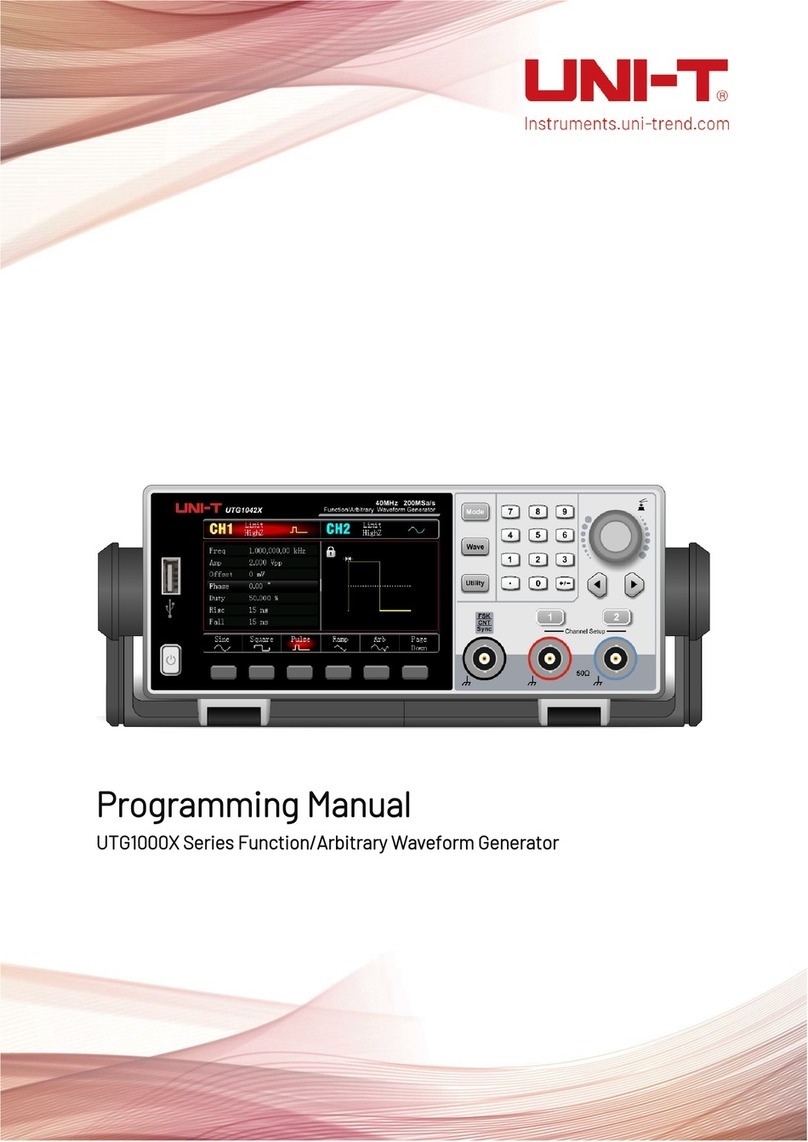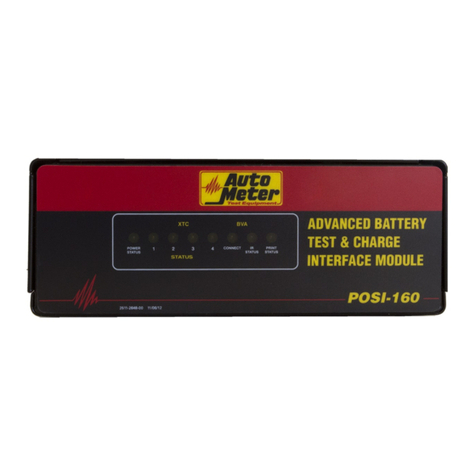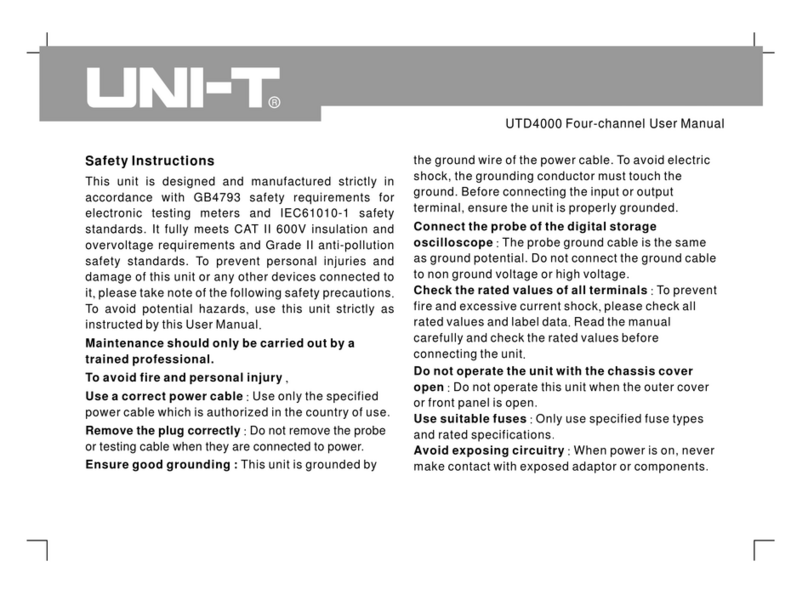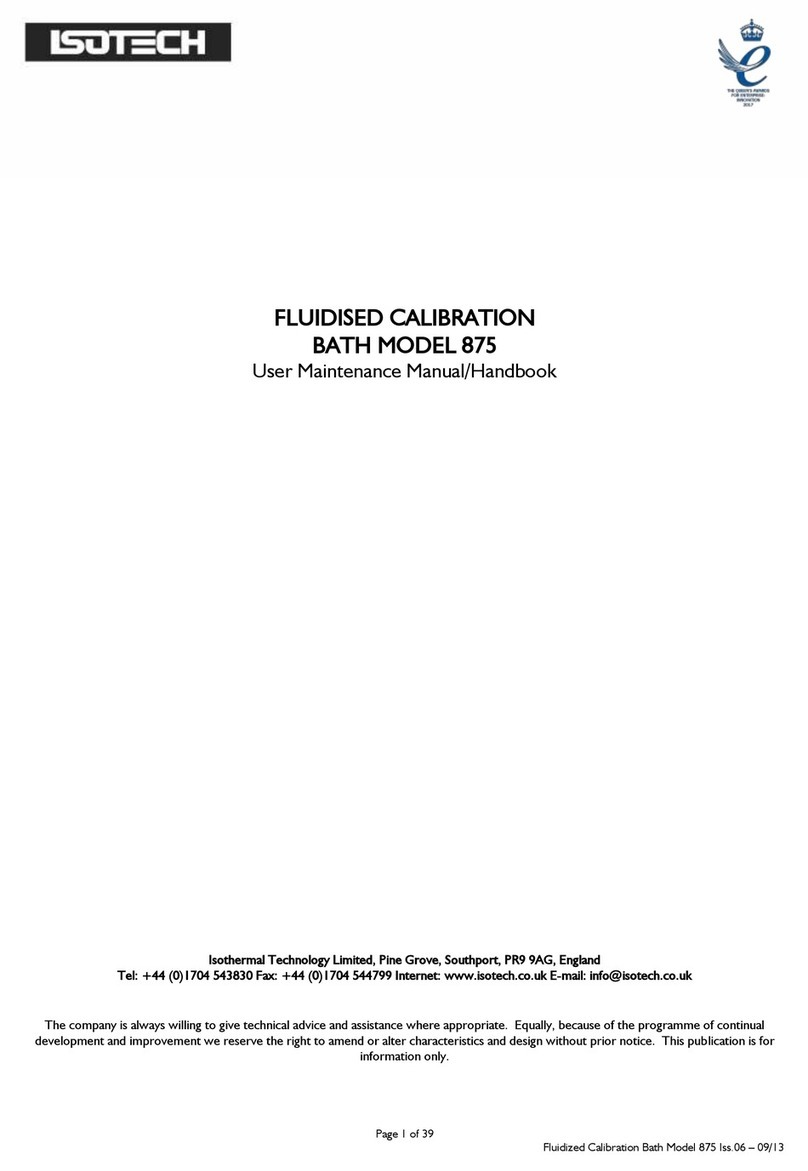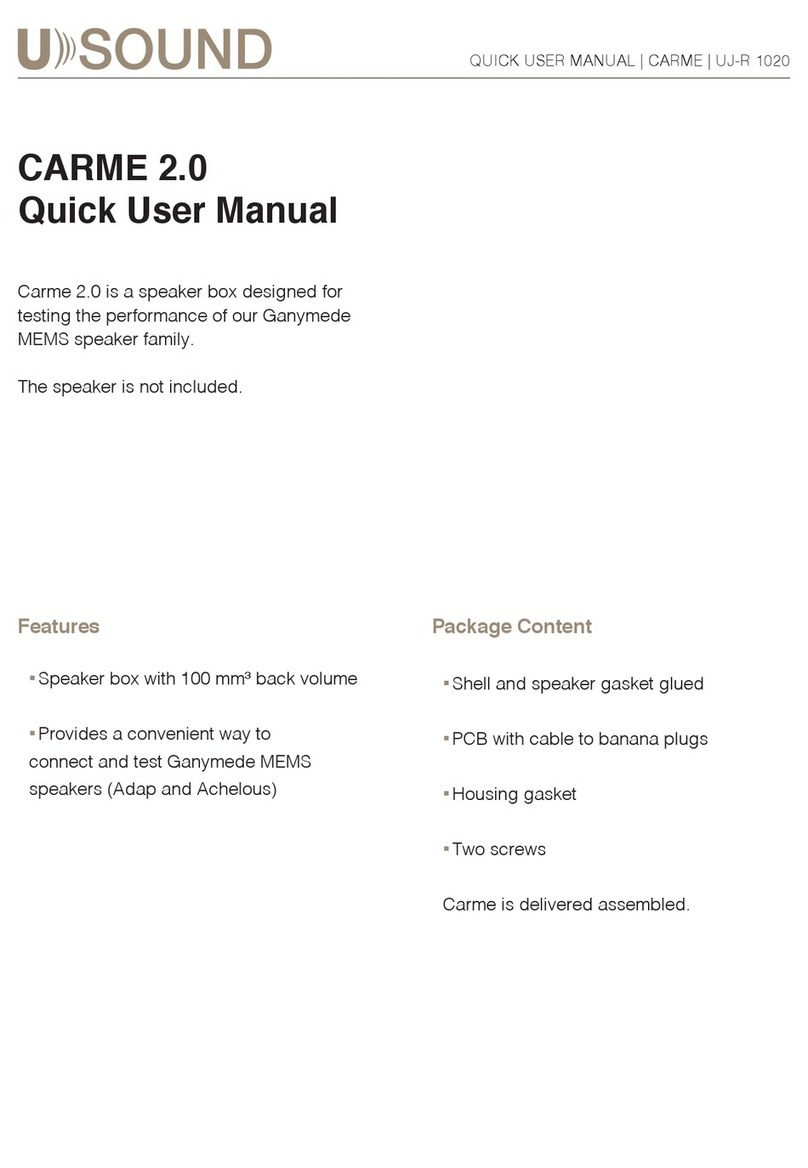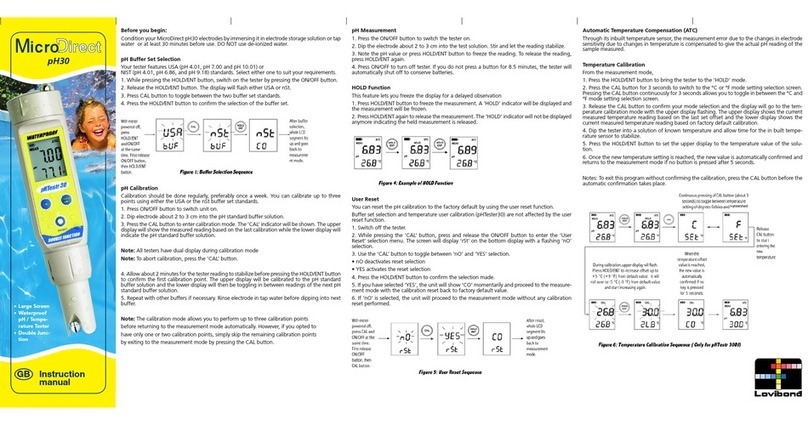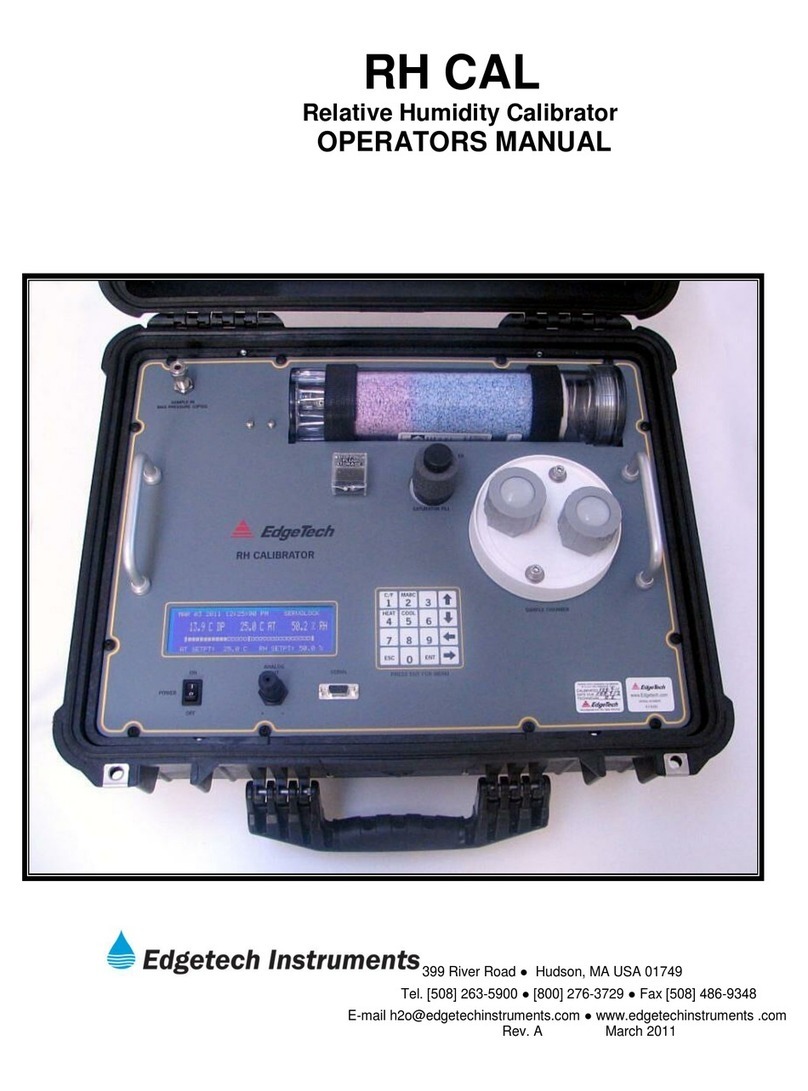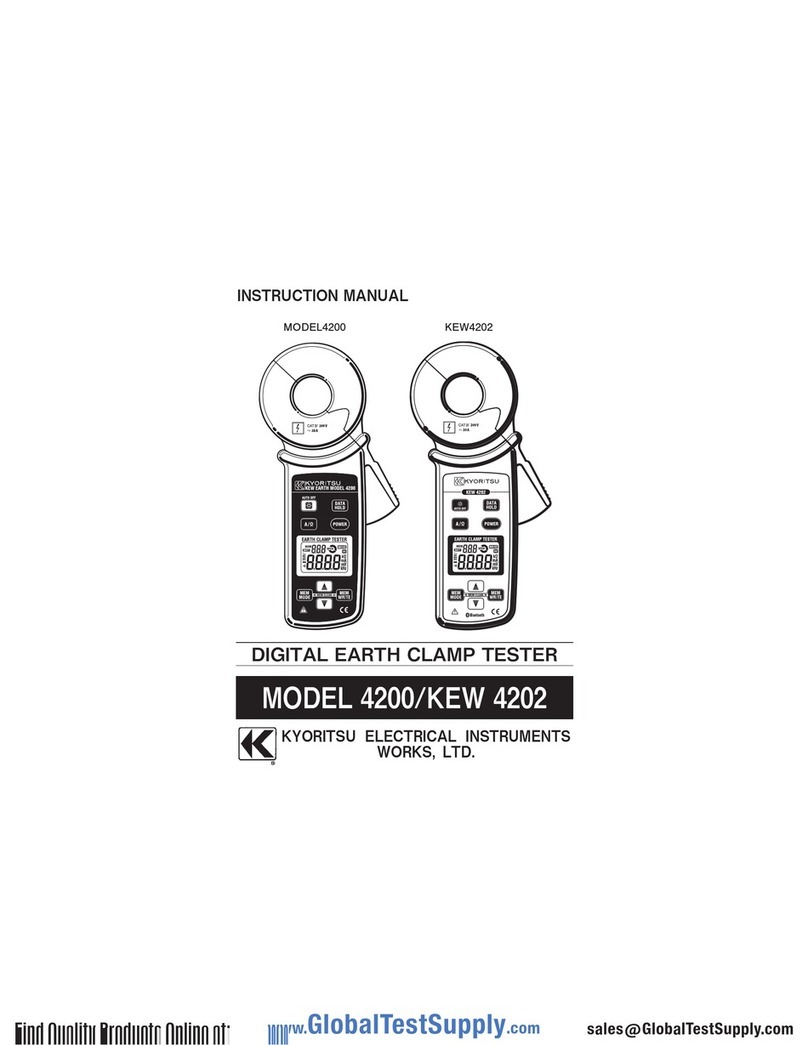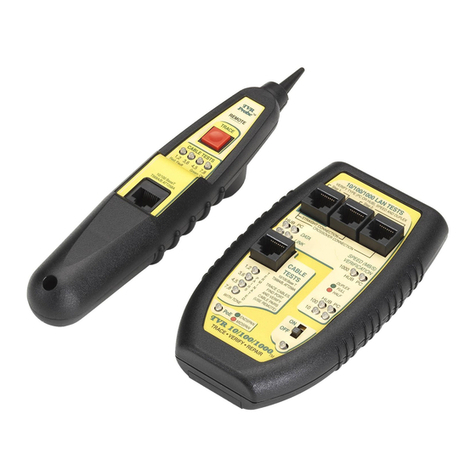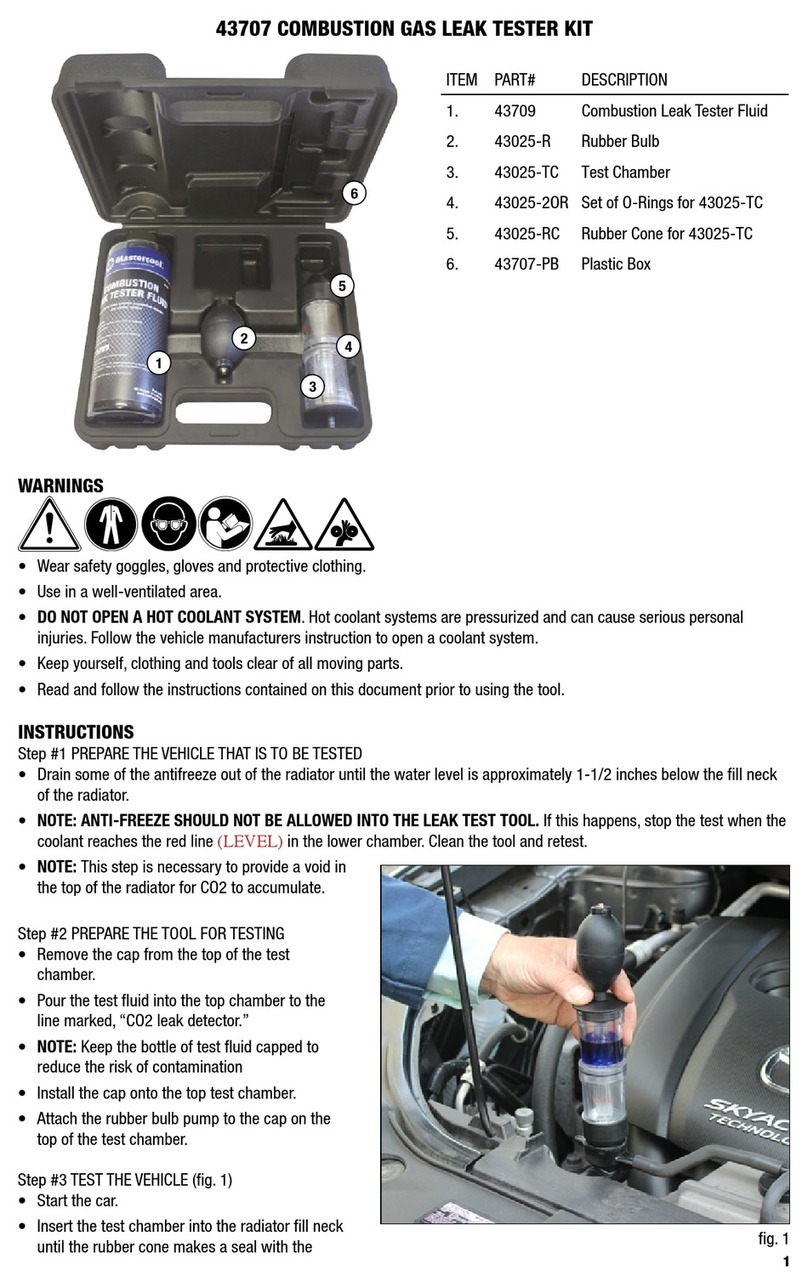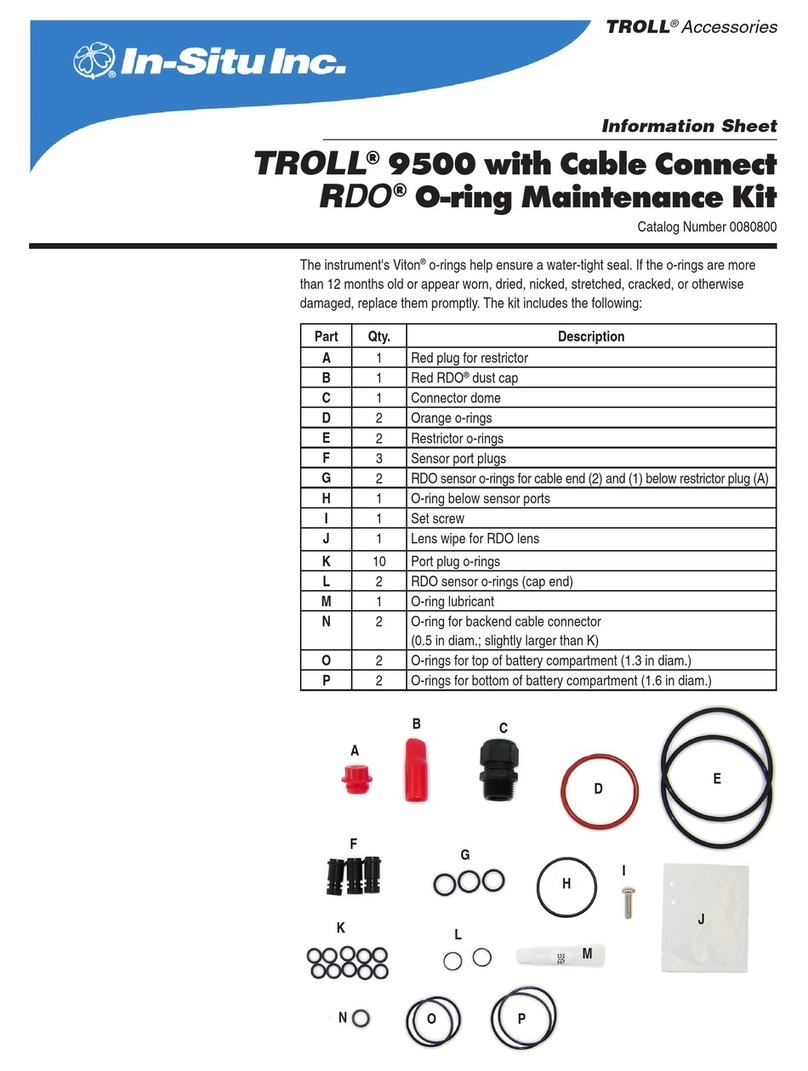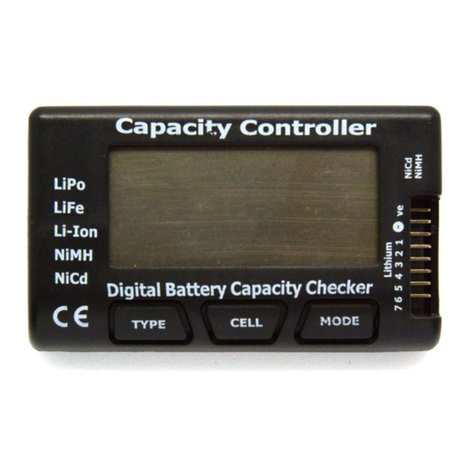Unit 17. Millbrook Business Park, Sybron Way • Crowborough, East Sussex TN6 3JZ United Kingdom
Phone: 00 44 (0) 1892-665313, Fax: 00 44 (0) 1892-668838 • E-mail: info@charleswater.co.uk, Internet: Charleswater.co.uk
PPE-5084.E Page 3 of 4 © 2007 CHARLESWATER LTD.
POLARITY SELECTION
The top of the rocker switch is labeled
“+”, and the bottom is labeled “-”. To
provide a POSITIVE voltage output,
touch the plate located underneath the
charger, and press the switch forward at
the same time. To provide a NEGATIVE
voltage output, touch the plate located
underneath the charger, and press the
switch downward at the same time.
GROUNDING - IMPORTANT!
For the charger to work correctly, the
operator and the field meter must be
properly grounded. A ground path to
the touch plate must exist.
IONIZER DISCHARGE TIME
MEASUREMENTS
Use the field meter with the conductive
plate in the appropriate location for
measurements.
POSITIVE DISCHARGE TIME
MEASUREMENT
To provide a POSITIVE voltage output,
touch the plate located underneath the
charger, and press the switch forward at
the same time. Momentarily touch the
charger’s output terminal to the
conductive plate attached to the field
meter. The meter reads approximately
+1.10kV. By using a stop watch or
other timing device, determine the time
needed for the voltages to decrease
from +1.10kV to +0.10kV. This is the
positive discharge time.
NEGATIVE DISCHARGE TIME
MEASUREMENTS
To provide a NEGATIVE voltage output,
touch the plate located underneath the
charger, and press the switch downward
at the same time. Momentarily touch
the charger’s output terminal to the
conductive plate attached to the field
meter. The meter reads approximately -
1.10kV. By using a stop watch or other
timing device, determine the time
needed for the voltages to decrease
from -1.10kV to -0.10kV. This is the
negative discharge time.
IMPORTANT: A ground path must be
provided between the touch plate of the
Charger and the ground reference of
the Field Meter and Conductive Plate.
This is normally provided by holding the
Charger in one hand and the Field
Meter with Conductive Plate in the
other.
Calibration
The overall accuracy of the Ionisation
Test Kit and the Digital Static Field
Meter is ±5% nominal. The Digital
Static Field Meter is factory calibrated.
If for any reason you believe the meter
is not working correctly, please contact
Charleswater Customer Service
.
CAUTION - There are no user
serviceable parts. Any unauthorized
service will void the warranty and
result in additional repair charges.
Maintenance
BATTERY REPLACEMENT
The Digital Static Field Meter and
operates from a standard 9 VDC
alkaline battery. Battery life is in excess
of 30 hours under normal use. When
the battery voltage drops below 6.7
volts, a battery symbol will appear in the
display. To change the battery, slide the
battery cover down at the back of the
meter and remove the battery from the
battery clip. Replace the battery with a
fresh one and reinstall the battery cover.
The battery should be removed from the
meter if its is to be stored for an
extended period of time.
The battery in the Charger should be
replaced annually and whenever you
plan an extended period of unattended
monitoring.
CLEANING
It is important to keep the insulators on
the adapter plate clean and free of
contaminates that may cause surface
leakage. To test the performance of the
adapter plate, charge the plate and note
the discharge rate in a non-ionized
area. The self discharge rate to 10% of
original voltage should not be less than
five minutes.
Figure 6. Taking decay measurements
The area around the aperture of the
Digital Static Field Meter must be kept
clean to ensure accurate, drift-free
readings. Never touch the aperture with
anything. To remove dust or other
particulate matter, use low-pressure
instrument-grade air. To remove more
severe contamination, spray or flush
with the smallest practical amount of
clean technical-grade of isopropyl
alcohol. Then allow the instrument to
air dry for several hours.
Specifications
Digital Static Field Meter
Display:
3.5 digits, 9.5mm digit height LCD
Response:
<1 sec., 10% to 90% equivalent to 5Hz
output
Range:
±0.00 to ±19.99 kV/25mm (kV/inch)
Accuracy:
±5% of displayed value
Environment:
0 - 50°C at 85% RH (non-condensing)
Analog Output:
2.5mm phone jack/plug
±10 mV corresponds to ±1 kV
Power:
9 VDC alkaline battery
Battery life in excess of 30 hours
Size:
6.1 cm x 10.7 cm x 3.3 cm
Weight:
0.14 kg (with battery)
Conductive Plate
Plate Capacitance:
13 picofards ± 2 picofards
Range:
0 to ± 2kV, higher voltages may be
measured
Grounding:
Connection through conductive case
of Digital Static Field Meter
Weight:
0.04 kg
Charger
Output:
1100VDC monimal, <1:A Max.
Output Terminals:
Banana / acorn assembly




